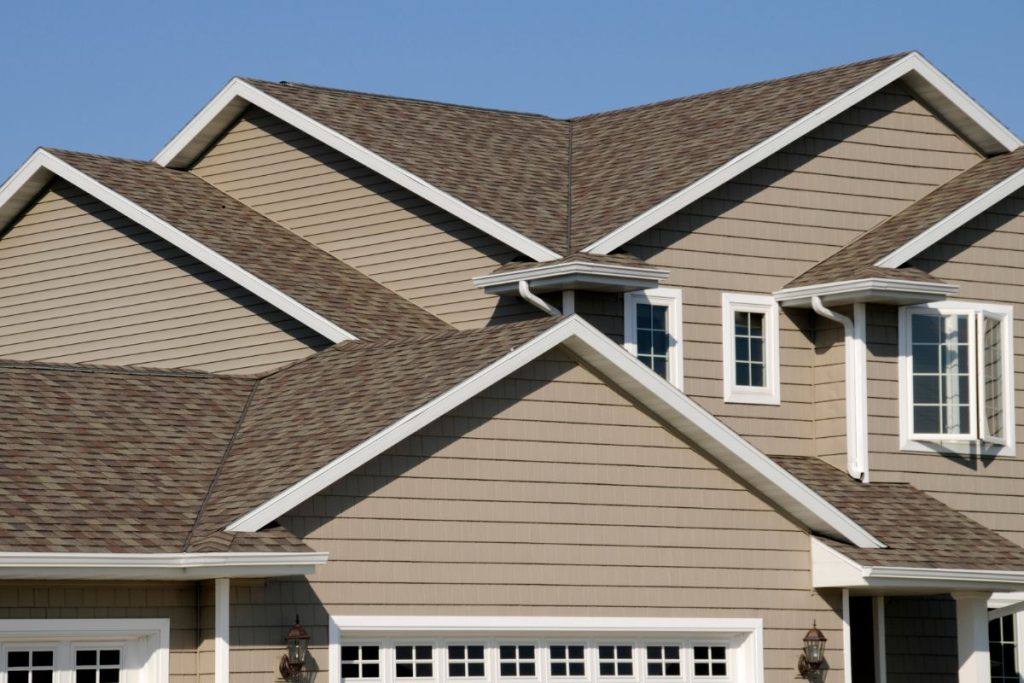Vinyl siding is one of those home upgrades that feels like a cheat code. It’s affordable, looks clean, and doesn’t demand constant upkeep. But the real question is, how long does it actually last before you’re stuck planning another big project?
The truth is, lifespan depends on a mix of quality, installation, and how well you treat it. Done right, vinyl siding can keep your place looking sharp for decades without turning into a money pit.
This guide breaks down the factors that make or break its durability. You’ll know what to expect, how to extend its life, and when it’s time to call in the pros for fresh siding.
How many years does vinyl siding last on a house?
Typically 20 to 40 years, and sometimes longer with good upkeep and mild weather.
Key Takeaways
- Vinyl siding lasts 20–40 years, sometimes longer in mild climates.
- Quality, installation, and upkeep are the biggest factors.
- Regular cleaning and quick repairs extend its lifespan.
- Watch for cracks, fading, and rising energy bills as replacement signs.
- It’s cost-effective, balancing durability and low maintenance.

Average Lifespan of Vinyl Siding
Vinyl siding isn’t a one-season fling. On average, it lasts 20 to 40 years depending on quality and how well you treat it.
Weather’s the main villain here. Harsh sun, heavy storms, or constant moisture can shorten its lifespan. But if you’re in a mild climate, your siding could push past the 40-year mark.
The cheat code? Regular cleaning and quick fixes. Wash off grime once or twice a year, and repair cracks early before they spread. With a little upkeep, your siding becomes less of a temporary outfit and more of a long-term style investment.
Key Factors That Affect Durability
Climate and Weather: Vinyl siding loves mild conditions. But if you’re in a place with blazing summers or harsh winters, it takes more hits. Extreme temps and UV rays can speed up fading and warping.
Installation Quality: Even the best siding looks sloppy if it’s installed wrong. Loose panels or bad nailing can let moisture creep in. Always go with pros who know how to lock it tight.
Maintenance Habits: Vinyl’s low-maintenance, not no-maintenance. A quick wash once or twice a year keeps dirt and mildew from messing with its look. Skip it, and grime will age it faster than it should.
Product Grade: Not all vinyl is created equal. Thicker panels with UV protection stand strong for decades. Cheaper options might save cash upfront but usually crack or fade sooner.
Surrounding Environment: Got trees brushing against your siding? Or sprinklers hitting it daily? Little things like that add up. Trim back branches and redirect water to keep your siding looking fresh.
Signs Your Vinyl Siding Needs Replacement
Cracks and Warping: If your siding looks like it’s been through a boxing match, it’s time to act. Cracks, dents, or panels that bow out aren’t just ugly, they let moisture sneak in.
Fading and Discolouration: When the colour looks more “washed-out tee” than “fresh fit,” your siding’s losing its protection. Fading means UV damage, and it won’t bounce back with a quick scrub.
Rising Energy Bills: If your AC’s working overtime while you’re still sweating, blame the siding. Worn-out panels lose insulation power, making your bills spike.
Mold, Mildew, or Rot: Spotted green patches or funky smells are bad news. They signal trapped moisture, which spreads fast and wrecks walls.
Loose or Missing Panels: If panels are rattling like cheap sunglasses in the wind, that’s a flex you don’t want. Loose or missing siding leaves your home exposed to rain and pests.
How to Extend the Life of Vinyl Siding
Vinyl siding can last decades, but only if you treat it right. Think of it like sneakers: clean them up, and they’ll stay fresh longer.
Start with simple maintenance. Rinse it down once or twice a year with a garden hose. Skip the power washer—it’s overkill and can do more harm than good.
Watch for loose panels or cracks. Fixing small issues early keeps bigger problems (like water damage) off your plate.
Landscaping matters too. Trim bushes and trees so they’re not constantly rubbing against your siding. That friction wears it down faster than you’d think.
Finally, keep grills, fire pits, or anything super hot a safe distance away. Vinyl and high heat don’t mix. Do these small things, and your siding will flex its curb appeal for years.
Comparing Vinyl Lifespan to Other Siding Options
Vinyl siding usually gives you 20 to 40 years of reliable curb appeal. That’s a long stretch compared to wood, which often needs repainting or replacement in half that time.
Fiber cement has the stamina to push past 50 years, but it demands more upfront cash and maintenance muscle. Metal siding holds up even longer, but the industrial vibe isn’t everyone’s flex.
If you want something that balances durability, style, and price, vinyl’s the sweet spot. It lasts long enough to feel like a smart investment without draining your wallet or weekends on upkeep.
Cost vs Longevity: Is Vinyl Worth It?
Vinyl siding is one of those rare upgrades that doesn’t drain your wallet yet keeps paying you back. It’s priced on the lower end compared to other options, but it still lasts decades with little upkeep.
You’re basically buying low-maintenance curb appeal that sticks around. Sure, you might replace it once in your lifetime, but that’s a fair trade for the upfront savings and the time you’re not spending on repairs. In short, vinyl is a solid balance of cost and lifespan.
FAQs on How Long Does Vinyl Siding Last?
1. Does vinyl siding really last 30–40 years?
Yes, with proper care it can easily stretch past three decades. Some premium options push closer to 50.
2. What shortens its lifespan?
Sun exposure, wild temperature swings, and lack of maintenance can speed up wear.
3. How do I make it last longer?
Simple moves like washing it yearly, checking for cracks, and fixing loose panels keep it looking fresh.
4. Is replacing it worth it?
If repairs pile up or colours fade badly, replacement’s usually the smarter flex.
Conclusion
Vinyl siding isn’t forever, but with good care, you’ll get decades out of it. Keep it clean, fix small issues early, and you’ll stretch its life while keeping your place looking sharp. Treat it right, and it’ll flex style and function without draining your wallet.







